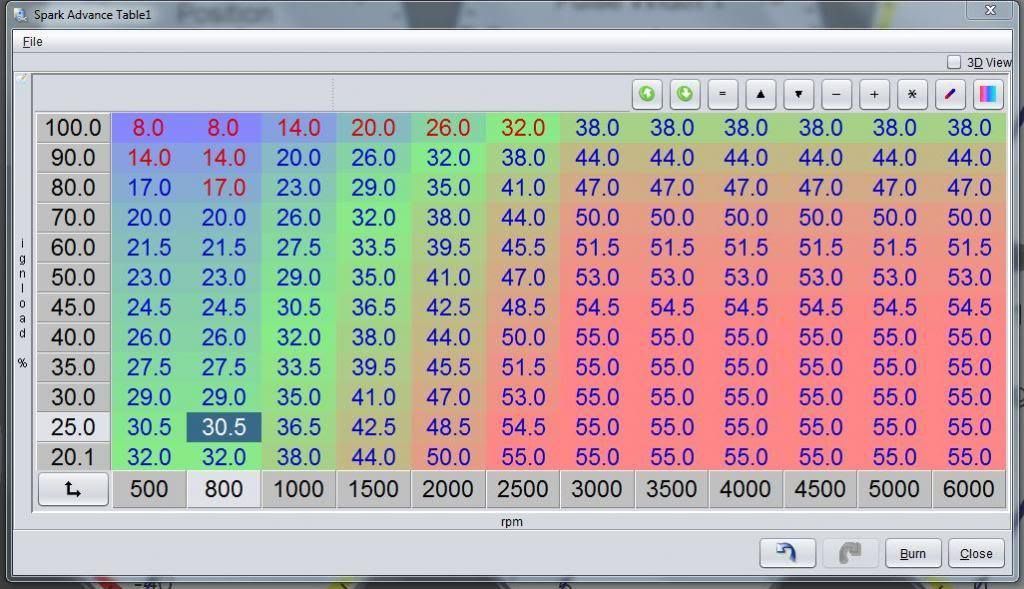I google searched for AMC ignition timing table and found this example.

Then I went back and looked at the original tune a guy sent me for the AMC360. It looks very similar. These numbers look large to me. And the base timing is at 25 degrees. Are the numbers this large because advance is included?
The table I have created and have been using, the numbers are probably half the value. I need some education.
My setup is a hei dizzy using a trigger wheel with sensor. The tune I got was for a coil on plug setup also using trigger wheel, if that makes any difference?
Wow, nearly 2 hours, you must have asked a hard question. I'm just spitballing here and know very little about such things but those do sound high for a starting point. I know when you go lean you have to run a lot of advance to keep it running cool, maybe the guy was trying to wring max economy out of a smog motor?

That looks similar to what I've seen with OEM timing maps in similar engines (all iron, primitive combustion chamber).
Need to be careful running that much timing through a distributor on a V8. If the rotor isn't phased correctly, the spark might jump to the previous cylinder.
All the same, really, the 100kpa bit looks about right and the rest follows what appears to be an appropriate "vacuum advance" curve. Nothing crazy at all. I am going to assume that this tune is using a separate idle advance curve/map, simply because if it is idling at, say, 30kpa and 900rpm, that timing map has a positive feedback loop where there is more advance at higher RPM and lower advance at lower RPM, which is the opposite of what you would want if you are interested in getting a stable idle. You'd get the EFI equivalent of trying to idle with manifold-sourced vacuum advance, or mechanical advance weights so weak that the advance is coming into play at idle - higher RPM/vacuum makes the timing advance which makes the RPM go higher, and vice-versa.
Which is why you go with a separate idle advance map, which is kind of the EFI equivalent of using ported vacuum...
Edit - Or maybe the engine is supposed to idle at 650rpm and the 500/800RPM bins are bracketing that idle speed. Engines that idle that low are strange and exotic devices to me 
Thank you guys for the replies. I guess I will just run it like this see what happens. If anything I guess I will just start bumping it down till it feels right. Best I can do until I get some scratch for a Dyno tune.
The numbers in the table are the advance numbers, which if you are used to a distributor will be the "base" timing plus any mechanical advance (going across the table) and the vacuum advance (going down the table from the top row).
I am not too familiar with the AMC 360 but if it's anything like the other large bore motors I have dealt with 38deg of total timing (100kpa/max advance) on pump gas doesn't seem too far off.
Paul_VR6 wrote:
The numbers in the table are the advance numbers, which if you are used to a distributor will be the "base" timing plus any mechanical advance (going across the table) and the vacuum advance (going down the table from the top row).
I am not too familiar with the AMC 360 but if it's anything like the other large bore motors I have dealt with 38deg of total timing (100kpa/max advance) on pump gas doesn't seem too far off.
Ahh I see, now those numbers make alot more sense. Thank you!



















